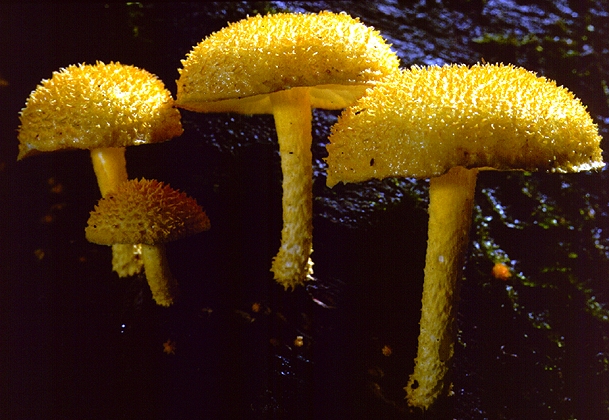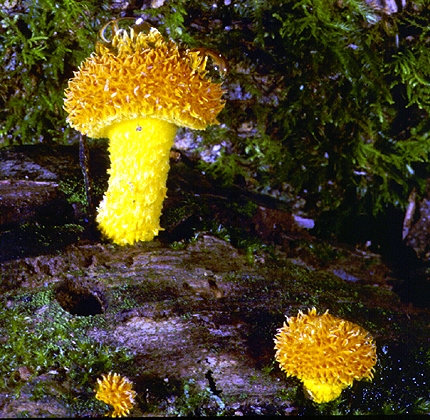
Cyptotrama aspratum (Berk.) Redhead & Ginns

Common name: None.
Description: The caps are usually up to 3 cm in diameter, but occasional specimens reach 68 cm. At first the fungus appears as a small orange and very prickly button on the wood surface, but it then expands to the normal toadstool shape. The mature caps are brilliant yellow-orange with a dry surface covered with small, erect, orange-red spines. The margins are often a little in-rolled, and the gills are adnate and white and are at first protected by a fine, cobwebby veil. The stem may be up to 6 cm long; it is usually 24 mm thick. It is yellow, smooth and dry. There is no ring.
The spores measure 78 × 56.5 µm, are broadly ellipsoidal to subglobose or lemon-shaped, smooth, and colourless but white in mass.
Substratum: This fungus is always found on dead logs or small branches on the forest floor. Usually only one or two emerge, but occasionally, when large numbers erupt from a log under particularly favourable conditions, the fungus is a very spectacular find.
Distribution: Known from Queensland, New South Wales, Victoria, Tasmania and South Australia.

Notes: This species was called Armillaria asprata in J.H.Willis delightful book Victorian Toadstools and Mushrooms where it is accompanied by a black and white reproduction of a watercolour by M.I.Howie. The painting is now in the National Herbarium of Victoria and is part of a very beautiful collection of watercolours by the same artist.

